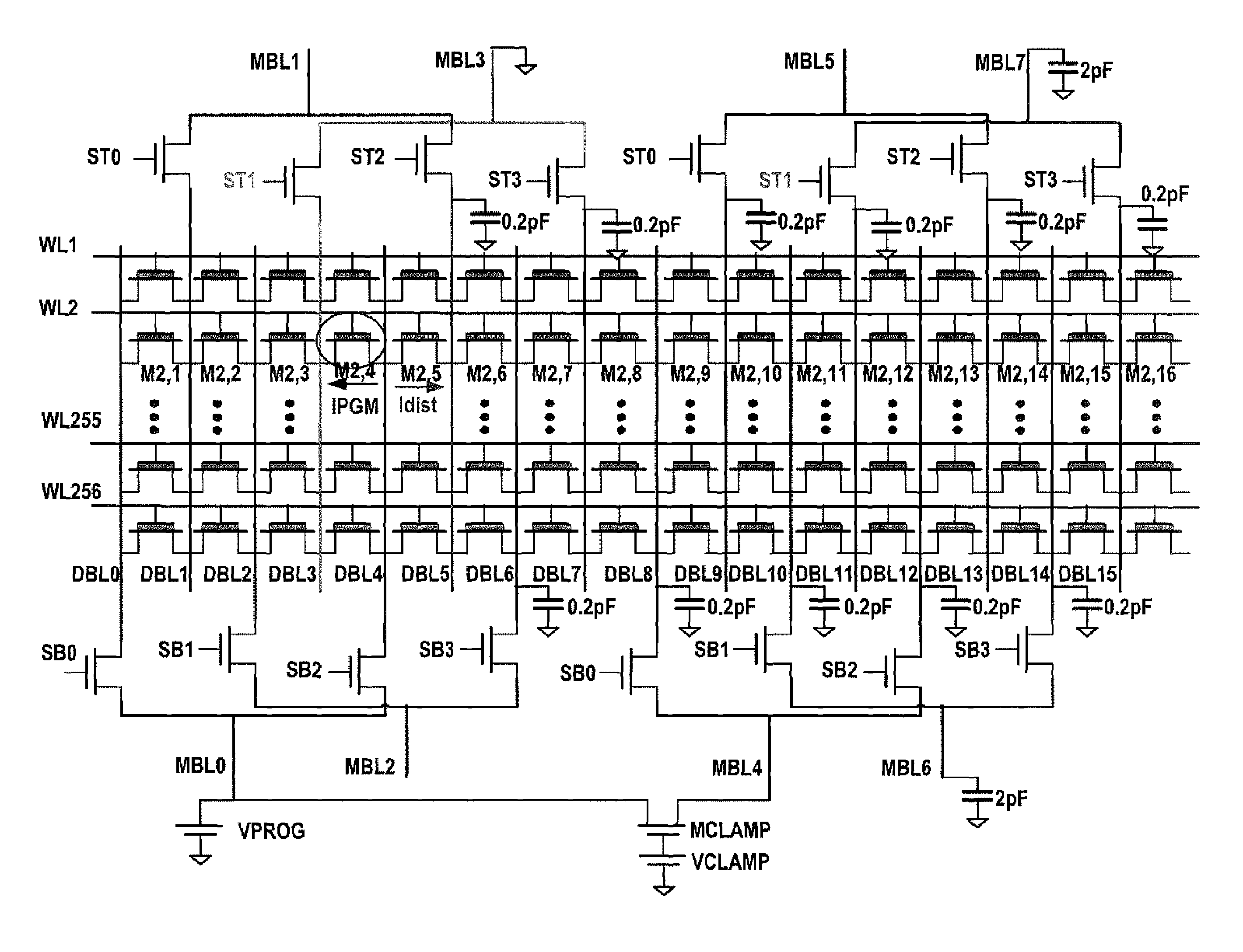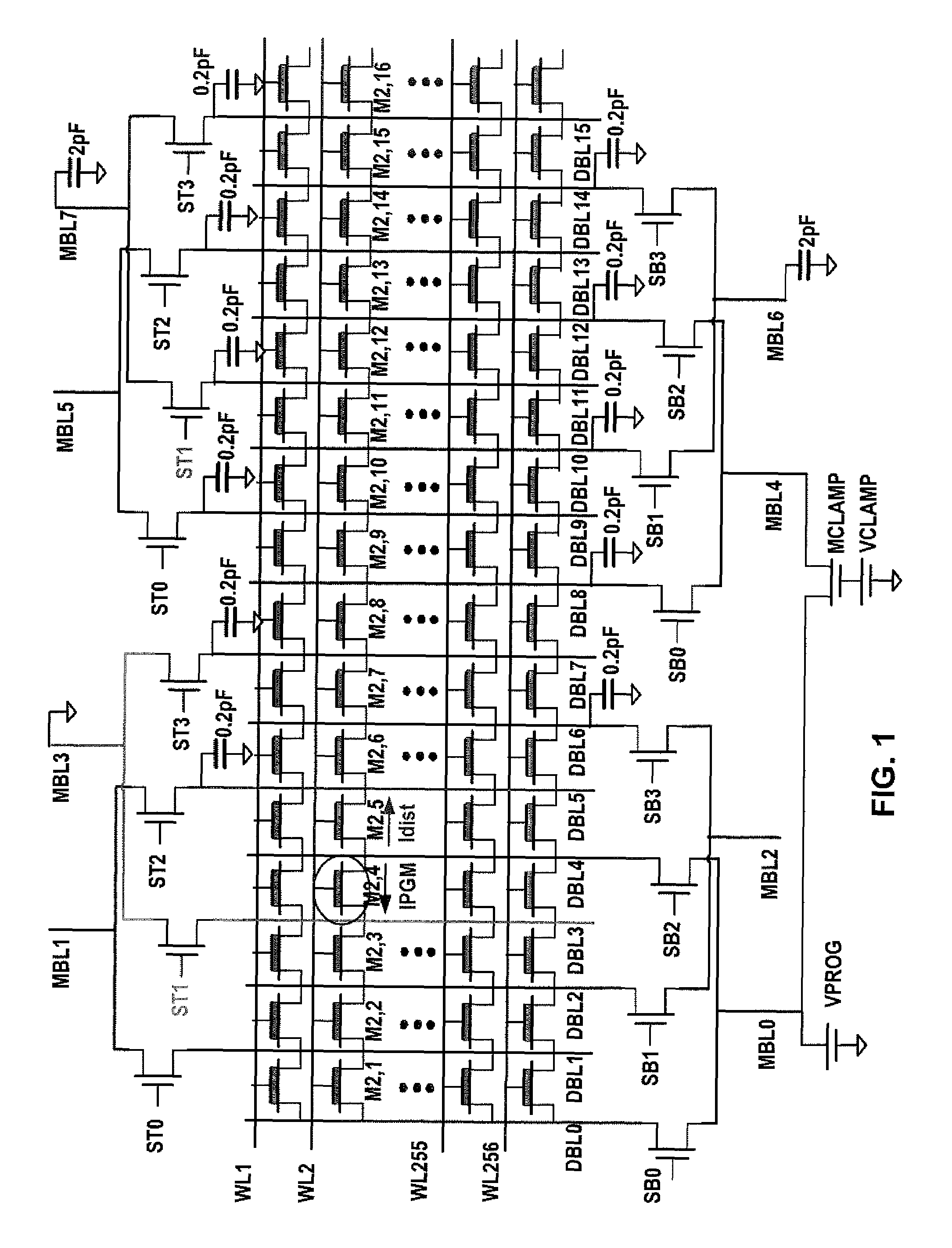Method and apparatus for programming nonvolatile memory
a nonvolatile memory and programming method technology, applied in the field can solve the problems of unwanted programming of unselected memory cells adjacent to each other, complicated programming operation of nonvolatile memory cells,
- Summary
- Abstract
- Description
- Claims
- Application Information
AI Technical Summary
Benefits of technology
Problems solved by technology
Method used
Image
Examples
Embodiment Construction
[0028]FIG. 1 shows a nonvolatile memory array accessed by word lines, diffusion bit lines, and metal bit lines, which reduces or eliminates the program disturb effect. The array is arranged in rows and columns. The rows of nonvolatile memory cells are accessed by word lines WL1, WL2, . . . , WL255, and WL256. The columns of nonvolatile memory cells are accessed by diffusion bit lines DBL0, DBL1, . . . , etc. The diffusion bit lines are in turn selectively electrically connected to metal bit lines MBL0, MBL1, . . . , etc.
[0029]A set of select lines and transistors selectively electrically connect each metal bit line to multiple diffusion bit lines, as follows:
[0030]Metal bit line MBL1 is electrically connected to the drain of a transistor whose source is electrically connected to diffusion bit line DBL1, and whose gate is electrically connected to select line ST0. Similarly, metal bit line MBL1 is also electrically connected to the drain of a transistor whose source is electrically c...
PUM
 Login to View More
Login to View More Abstract
Description
Claims
Application Information
 Login to View More
Login to View More - R&D
- Intellectual Property
- Life Sciences
- Materials
- Tech Scout
- Unparalleled Data Quality
- Higher Quality Content
- 60% Fewer Hallucinations
Browse by: Latest US Patents, China's latest patents, Technical Efficacy Thesaurus, Application Domain, Technology Topic, Popular Technical Reports.
© 2025 PatSnap. All rights reserved.Legal|Privacy policy|Modern Slavery Act Transparency Statement|Sitemap|About US| Contact US: help@patsnap.com



